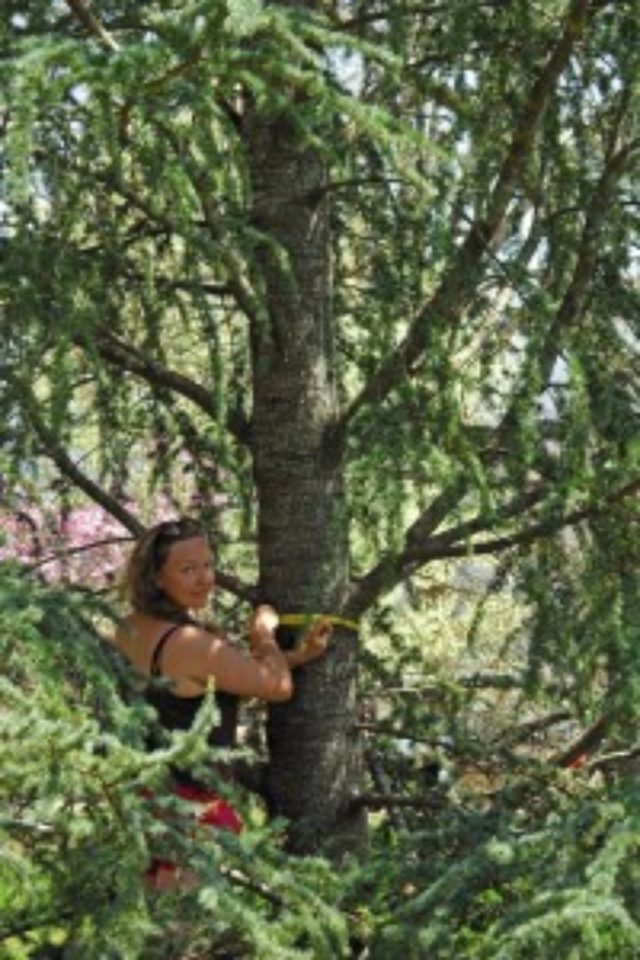
A student crew member measures one of Warren Wilson’s trees.
You don’t have to venture into the 625-acre Warren Wilson College Forest to find trees – lots and lots of trees. Just ask Tom LaMuraglia.
LaMuraglia, better known around campus as Tom Lam, is the College’s landscaping crew supervisor. He was involved in directing Warren Wilson’s Center Campus Tree Inventory and Carbon Sequestration/Storage Analysis, recognized as a 2013 Best Case Study by the Association for the Advancement of Sustainability in Higher Education.
So how many trees were measured and catalogued in the 39-acre landscape tree census and 20-acre forest sample inventory? Nearly 10,000 – 9,913 to be precise – including 135 different species in the landscape census alone.
“The inventory gave us an incredible wealth of information, including carbon analysis and knowing the value of our trees,” LaMuraglia said.
The study found that the trees sequester 62 metric tons of carbon yearly, store 2,195 metric tons of carbon in their wood, and remove 1.57 metric tons of pollution annually. They have a structural replacement value of a whopping $11 million.
The data have prompted LaMuraglia and his crew to look even more toward the future – 100 years into the future, in fact.
“We’re increasing our efforts at keeping trees alive because of various benefits, and we’re looking at 100 years out,” LaMuraglia said. “We’re constantly trying to mitigate tree decline, mostly by pruning.”
Several years ago, the landscaping crew treated 600 hemlock trees – yes, 600 – on campus that were susceptible to the deadly hemlock woolly adelgid, which kills trees within a few years after infestation. The treated hemlocks remain healthy today.
The crew also plants trees – again, looking far into the future.
“We planted two white oak trees this past fall from our own stock,” LaMuraglia said. “White oaks really store carbon for a long time.”
And, of course, there’s great academic benefit to having trees measured and catalogued.
“The students on the landscaping crew applied their academic course work in biology, environmental studies, forestry, math and GIS to the practical work of measuring, identifying, analyzing and reporting on the ‘carbon value’ of the core campus forest,” said Stan Cross, interim director of the College’s Environmental Leadership Center. “In doing so, they have advanced the national dialogue regarding the importance of urban forests.”
And you may not need to be an expert to learn much of what’s growing on campus. Linden Blaisus, a 2011 Warren Wilson graduate who directly supervised the project as a paid intern, and mathematics/computer science professor Evan Wantland have been working on a phone app that allows people to identify tagged trees.